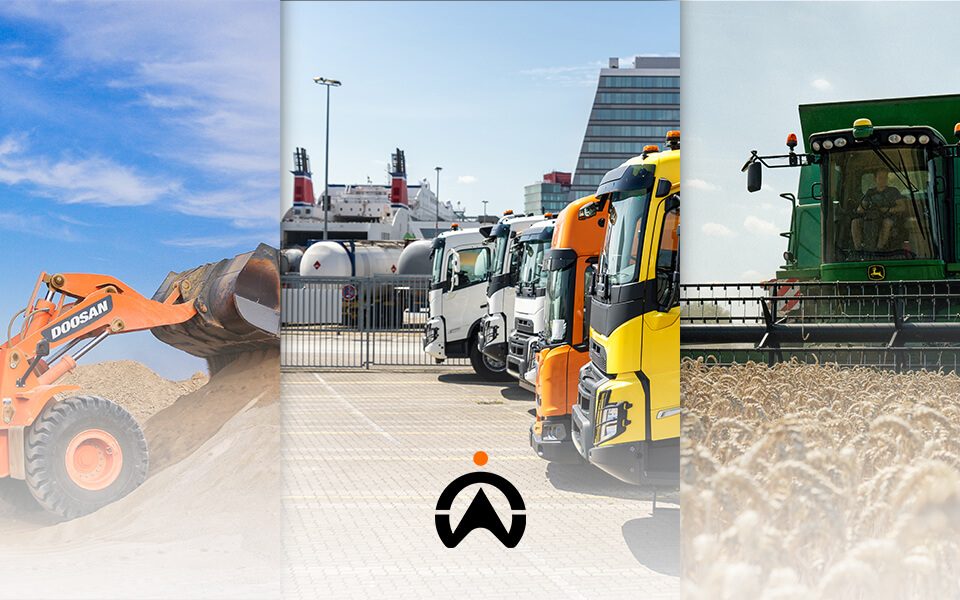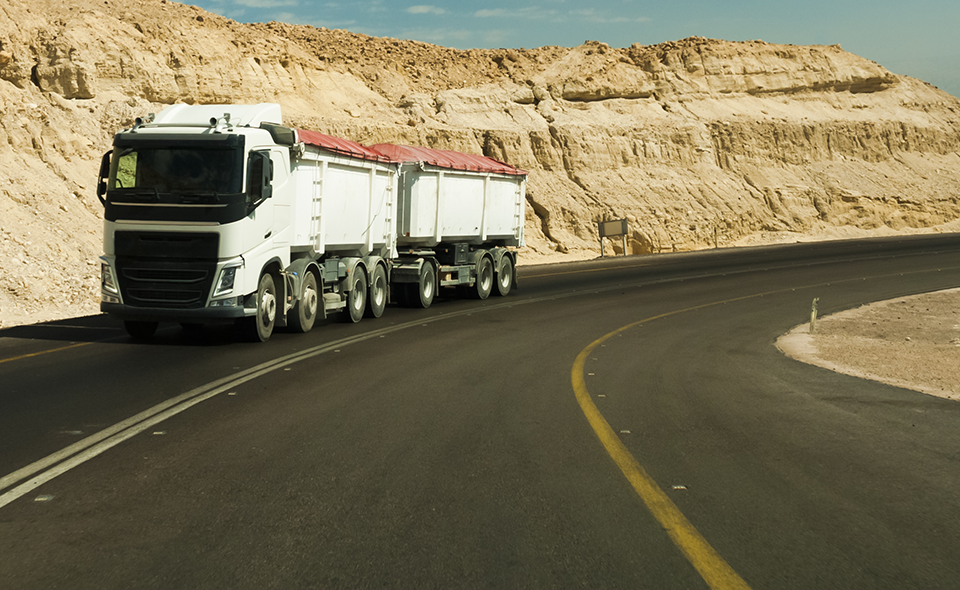Last Mile Delivery: What is it, and How to Make Your Fleet Deliveries Profitable
Is your fleet equipped to handle last-mile deliveries? No, this isn’t referring to a literal mile; it’s the last phase of fleet deliveries focused on getting goods to customers.
What exactly does this “final lap” entail, and how can your fleet ensure it stays efficient in it?
Let’s find out.
What is last-mile delivery?
Last-mile delivery, also known as the “final mile,” is the concluding part of the supply chain, where products move from a distribution centre to their ultimate destination, the end consumer’s home or business. This phase, which is often seen as the most critical yet challenging aspect of logistics, involves the actual delivery of goods to their final destinations, requiring a focus on efficiency, speed, and cost-effectiveness to promptly fulfil customer orders while minimising operational expenses.
Despite the relatively short distance covered compared to other stages of the supply chain, last-mile delivery presents complexities. Its challenges stem from the transition of goods from transportation hubs or distribution centres to customers’ homes, lacking the same level of control, consistency, and scale as earlier stages in the logistics process. While the broader logistics process involves a complex network of rail, sea, road, and air transport, the last mile poses unique difficulties that make it a crucial and intricate part of the entire supply chain.
To gain a comprehensive understanding of last-mile delivery, we must examine the entirety of the supply chain and its various stages.
The supply chain explained
A supply chain is the network of individuals, activities, and technology involved in the creation and sale of a product. From the delivery of sourced materials from suppliers to the delivery of a finished product to clients, the supply chain is a vital part of any business. The supply chain process involves two other major stages that come before last-mile delivery:
- First Mile:First-mile delivery marks the beginning of the delivery process, encompassing the initial phase of transporting goods within the supply chain. This stage involves transportation and the potential assembly of materials. It is a critical step where products are acquired, manufactured, and moved from their origin to a warehouse or distribution centre. This logistical process holds immense significance, particularly in the era of e-commerce, where customer expectations for fast and reliable delivery services have increased.An example of first-mile delivery in the retail industry is the shipping of bulk orders of newly ordered garments from a factory to a regional distribution centre, marking the beginning of the supply chain.
- Middle Mile:Middle-mile delivery plays a crucial role as a vital connection between the first and last stages of delivery, involving the transportation of goods from regional distribution centres to sorting facilities. This critical phase typically sees the movement of goods from ports or manufacturing facilities to warehouses or regional distribution centres.In contrast to first-mile delivery, which deals with individual producers or manufacturers, and last-mile delivery, which concentrates on product delivery to end customers, middle-mile delivery encompasses the transportation of goods between warehouses and established shipping points. This transportation involves the movement of goods across longer distances, potentially traversing various regions or international borders.To effectively do this, businesses may need to employ multiple modes of transportation, such as trucks or air, making it a complex and challenging aspect of the overall logistics journey.An example of middle-mile delivery in the retail industry is the shipping of bulk orders of garments from its regional distribution centre to a central sorting facility, where the items are organised and then sent to various retail stores in different locations.
Final-mile delivery trends in the e-commerce surge following the COVID-19 pandemic
The COVID-19 pandemic accelerated the rise of e-commerce, making it an essential service for purchasing a wide variety of goods. With physical stores temporarily closing or operating with restrictions, businesses were forced to either adapt to the changing landscape or run at a loss.
The lockdowns, social distancing measures, and concerns about in-person interactions due to the pandemic led people to shift towards online shopping as a safer, more convenient alternative.

The rise of new customers and business expectations
This rise in e-commerce has significantly impacted last-mile delivery, resulting in the rise of new expectations from customers for the logistics industry. These expectations include:
The core of e-commerce is the ultimate convenience for consumers, and its rise has not only impacted the way these customers engage with businesses but also what they expect from them.
Let’s take a look at three of the most common expectations that have risen:
- Increased purchase demand:
Online shopping has made life incredibly convenient, allowing you to order anything you need at the touch of a phone or click on a computer. This convenience has led to a significant increase in the demand for various products. As more people make purchases, we see a growing number of packages that need to be delivered to homes. While this increase in demand is incredible as it directly equates to higher profits, it also means the business needs to implement more strategies to ensure that they aren’t overwhelmed and under-equipped.
- Increased demand for fast and reliable deliveries:
The convenience of online shopping has raised customer expectations for fast, reliable, and cost-effective deliveries, so much so that many businesses even offer same-day or next-day deliveries. This puts pressure on the logistics industry to meet these demands. While the average customer’s willingness to wait for a delivery can vary, it is widely known that customers want to receive their goods as soon as possible. An example of this is seen in the retail industry, where 41% of global customers expect delivery within 24 hours and 6 out of 10 customers expect delivery within three days.
- Real-time tracking and visibility:One of the major selling points of online shopping is that customers can know exactly where their deliveries are. This insight is powered by the use of advanced technology, which has made it possible for businesses to gain full visibility of their entire operations. This also applies to those in the logistics industry. Customers want to know exactly where their delivery is and how long it will take to arrive at their door.
What are the challenges if customer and business delivery expectations aren’t met?
The success of a business and its ability to conduct efficient deliveries is dependent on its ability to meet the above expectations because if they aren’t made a priority, they can turn into challenges.
Let’s look at a few of the challenges faced in the last-mile stage of deliveries:
- Lack of visibility:
Lack of visibility in the last-mile stage of deliveries refers to the limited or insufficient information on the status and location of your delivery while it is in transit. This makes it difficult to identify and address potential issues that may arise while a product is being delivered. This is directly linked to the next challenge, which is inadequate route planning.
- Inadequate route planning:
Unpredictable conditions on the road when deliveries are being made, such as road closures and traffic conditions caused by car accidents or harsh weather conditions affect last-mile delivery. Poor route planning can contribute to high operational costs because inefficient routes are directly linked to increased fuel and labour expenses. Delivery environments are very complex, including congested urban areas and limited infrastructure, which can make planning and executing routes extremely difficult. Not being able to plan your route ahead of time is directly linked to the next challenge, which is late deliveries.
- Late deliveries:
What makes this a dangerous difficulty is that it directly impacts a customer’s experience. Late delivery refers to the failure to deliver goods to customers within the expected time frame. This can take place due to multiple reasons, which include poor route planning, no delivery route planning, traffic congestion, and car accidents. When there is no fleet visibility, managers aren’t able to see exactly where their vehicles are or how long it will take for deliveries to be completed. This means dates and times aren’t based on accurate numbers and customer commitments turn into a bit of a guessing game. With the lack of accurate information, businesses cannot give customers a heads-up on possible delays which increases their frustration and service dissatisfaction. Worse, an increase in late deliveries presents the next challenge, high delivery costs. Now you are forced to use more fuel for the delivery you failed to make and/or negotiate discounted rates to maintain customer relationships.
- High delivery costs:
Factors that contribute to high delivery costs in last-mile delivery include increased demand and customer expectations, poor route planning, failed deliveries, traffic congestion, and increased labour costs. Completing deliveries can be costly due to the fuel consumed when drivers need to travel to and from multiple delivery addresses. If these costs are consistently high, they can significantly lower fleet profits. Consistent high delivery costs can lead to profits declining by 26% over three years, especially if last-mile delivery isn’t optimised.
Breakdown of delivery stage costs
Having an inefficient delivery system can negatively impact your business finances, especially because last-mile delivery is the most costly stage.
Let’s take a look at the breakdown of costs in the 3 different delivery stages:
First-mile delivery:
Cost: 12%-20% of total delivery cost
In this initial stage, delivery costs come from the transportation of raw materials to production or storage. The composition of these costs includes:
- Transportation costs
- Warehouse receiving process
- Quality checks and packaging
- Paperwork and documentation
Middle-mile delivery:
Cost: 25%-35% of total delivery cost
In this second stage, delivery costs come from transportation from production or storage to distribution centres. The composition of these costs includes:
- Transportation and distribution costs
- Storage costs
- Route optimisation
Last-mile delivery:
Cost: 41%-53% of total delivery cost
In this third and final stage, delivery costs come from transportation, which takes the final products to their customers. This includes driver wages, vehicle maintenance, and route planning
- Driver wages
- Fuel costs
- Vehicle maintenance
- Route optimisation
The importance of customer experience and satisfaction
A customer’s experience is one of the most important aspects of final-mile delivery because it has a significant impact on customer satisfaction. Keeping customers happy goes beyond providing them with a great product or service; it’s about how you make them feel. This is a feeling that stays with them and has a long-term impact on the business and its reputation.
A positive customer experience helps you not only retain customers but also encourage brand advocacy. Increasing customer retention rates by just 5% can increase your profits by up to 95%, with 93% of customers likely to use a business again if they experience good customer service.
This is especially important in today’s digital age, where people can easily find a review of your company, which has a massive impact on whether they decide to do business with you or not. Studies show that 94% of consumers have avoided a company due to it having negative reviews, making these comments and reviews have a heavy impact on a business’s reputation.

Make fleet deliveries efficient with Cartrack Namibia
Ensuring that your fleet stays on top of its last-mile delivery game can be quite the challenge, but with Cartrack Namibia, that challenge becomes a breeze. The key? It’s our Delivery software
Cartrack Delivery is a feature-rich solution that is specially designed to streamline and optimise delivery operations for fleet managers and drivers. This user-friendly app caters for customers where constant change is a common occurrence, which we see in delivery services. What makes Cartrack’s Delivery software so unique is the fact that you don’t need a Cartrack Namibia tracking device installed in your vehicle to make use of it; all you need is a smartphone for each driver.
Let’s look at the 6 ways this solution can help you improve your fleet’s deliveries.
- Eliminate excess paperwork:
Streamline your administration and delivery processes at the tap of a button. You can leave notes on each job assigned to a driver with special instructions. Whether it be a car checklist, declarations and indemnity forms that customers need to sign, or setting up customer service reports, they can all be included in the job notes so your driver doesn’t miss a single step. All you need to do is add a relevant URL to your driver’s notes when creating a job that will redirect your client or driver to the document you need signed. Our app makes Proof of Delivery (POD) easier, allowing drivers to take photos of products being delivered as proof and allowing customers to e-sign for their packages. All this can be documented on the driver’s handheld device and managers can receive an instant notification that their delivery has been completed.
- Gain full visibility of all drivers and trips:
Gain access to a real-time view of all deliveries that need to be made, along with those that are currently in progress. Quickly see which of your drivers are available by looking at their status, which indicates if they are online, or taking a break. This allows you to not only track drivers but also accurately estimate when they will complete a delivery, helping you effectively schedule future deliveries.
- Keep operations functional with offline mode:
Sometimes, deliveries are made in areas with little to no coverage. This may sound like a challenge, but with Delivery, you can stay on track even when coverage isn’t on your side. Your drivers can operate in offline mode, and the moment they’re back online, all their delivery data will automatically update or upload, ensuring no job progress is ever lost.
- Unlock real-time update alerts for your drivers:Don’t keep your drivers waiting before they receive updated information. Delivery ensures that all changes you make on the fleet platform will immediately reflect on your driver’s handheld devices. This fast response time helps ensure that your drivers are immediately made aware of any changes, keeping them on track with all their jobs and avoiding any job frustration.
- Optimise your delivery routes:Reduce travel delays and unnecessary fuel consumption with our route optimisation feature. By analysing distance and travel times, this feature helps you and your drivers identify shorter and deviation-free routes to promote on-time deliveries. This is done by taking real-time road conditions into account, helping drivers quickly make the best rerouting decisions whenever an unforeseen delay occurs. This means you can make more timely deliveries, which positively impacts customer satisfaction.
- Keep your customers informed:Don’t leave your customers in the dark; instead, give them full insight into the delivery of their goods. With Delivery, you can notify your customers once their driver has started the delivery of their good/s via email. If you decide that you want to give your customers full visibility, a link that enables them to track their driver and the route that they are taking can be sent to them, helping them know exactly where their package is which keeps them in control and boosts customer satisfaction.
Make your fleet deliveries faster and more profitable with Cartrack’s Delivery solution
Whether you’re looking to improve delivery routes, eliminate excess paperwork, or gain full insight into your deliveries, Cartrack Namibia is the solution you’ve been looking for.
Ready to automate your fleet processes today and gain full visibility of task progress so you can complete jobs way more efficiently?
Contact us, and let’s boost your fleet delivery business.



